Route planning for Transat Jacque Vabre
Published on October 25th, 2019
Le Havre, France (October 25, 2019) – Imoca 11th Hour Racing skippers Charlie Enright and Pascal Bidegorry are posing for exhibition portraits during pre-start of the Transat Jacques Vabre 2019, duo sailing race from Le Havre to Salvador de Bahia, Brazil, as the last of the preparations are underway.
Sunday, October 27 will usher in a new dawn for sailing as the great ocean class for the last 30 years, the 60ft monohull IMOCA, makes a giant leap for the start the Transat Jacques Vabre Normandie Le Havre.
The latest generation foilers can almost fly but the weather forecast suggests the 14th edition of the bi-annual double-handed Route du Café will see the boats take baby steps. The disruptive technology jump means that they would be capable of a 10-day sprint along the 4,350 miles from Le Havre to Salvador de Bahia, but not this time.
What looked like a 12-13 day finish for the longest and toughest transat in the racing calendar yesterday had become 14-15 days on the routing by today with just 48 hours to the start. The start looks clean and fast but a low-pressure system over the Azores has complicated the opening phase.
“The forecast has been consistent for a few days now and there are two scenarios,” Antoine Koch, co-skipper of the brand new Advens for Cybersecurity, said. “In one, you go a long way west and you try to around the low pressure that is slightly west of the Azores. If you want to go around that low it’s a really long way west and then a long way south, making a very long course. And there’s a bit of uncertainty because we don’t know exactly where the centre of the low is going to be in one week.
“The other possibility is to stay along the coast and then you have a little bit of upwind, a little bit of downwind and then you have to cross a ridge (of high pressure) and then a second ridge, and a third, so that’s not an easy road. The tradewinds die with that low, but they normally come back from the east, so this eastern course may be safer than the western one.”
Alex Thomson, Hugo Boss, said his latest routing was saying, “These boats are capable of doing it in 10 days but the latest weather says 14-17 days, but it’s really changing a lot with every forecast. It looks like you have to make a choice at Ushant.”
The different capabilities of the boats may see some very different trajectories as illustrated by the fastest rookie in the west, Charlie Enright. (11th Hour Racing) “You can go west and hit some conditions that would really favour our boat, but could also break the boat in half,” the American skipper said.
“Or you can go east, which doesn’t suit our boat as much, but has less risk. That front will come about 3-4 days in, but we’ll need to make the decision sooner as we get around Pointe de Corsen and the western most point of Brittany.”
Enright’s entry adds another dimension to this technological leap as his learning curve is with a view configuring a new boat for a team in the Ocean Race, which has announced the next edition will be in IMOCA. This opening of a new chapter will see the bewildering array of architectural choices around their whiskers, new and old, face much more than a speed test.
Four years ago at the Transat Jacques Vabre five new foilers arrived and four did not finish. But the speed advantages were clear, the trend set and the foils bigger and wilder. Le Havre had shown the way and 15 months later three foiling boats were on the podium for the Vendée Globe.
Fast forward to 2019 and 16 of the 29 IMOCA have foils. Charal (Jérémie Beyou / Christopher Pratt) is the most successful and most people’s favourite having had more after launching last year – although it must be noted that it has never crossed the Atlantic.
Four new boats that launched at the end of summer will confront them: Advens for Cybersecurity (Thomas Ruyant, / Antoine Koch), Apivia (Charlie Dalin / Yann Elies), Hugo Boss (Alex Thomson, Neal McDonald) and Virbac Paprec (Sébastien Simon / Vincent Riou). Sadly, Virbac Paprec broke its port foil during the delivery to Le Havre, so will be flying with one wing.
Five boats, three different architects. After years of collaboration, VPLP and Verdier are now competitors. Charal and Hugo Boss went with VPLP. Apivia and Advens for Cyberscurity with Verdier while Arkea Paprec chose Juan Kouyoumdjian.
The variety of designers changes the situation of IMOCA, which has always worked in dominant waves (Finot-Conq, Farr Yacht Design then VPLP-Verdier). Foils in C, U, or L-shape are inventing a new alphabet. Who will be the first skipper to learn to read it?
In training, many of the other boats have experience Charal flying over the top of them in reaching conditions. Alex Thomson claims that |”Hugo Boss is running at 30 knots per 18 knots of wind.”
“The boats are much, much faster; the gains could be up to 10%, but they are much more demanding,” Koch, also a naval architect, said, adding that there is a lot of configuration work to do, especially in downwind conditions.
“These boats that have been virtual for a long time, existing only on papers and on video, in Le Havre we are finally discovering them,” Morgan Lagravière, co-skipper to Isabelle Joschke, on MACSF said. This 2007 IMOCA was revived with huge foils, as has been Initiatives-Coœr (Sam Davies / Paul Meilhat). That makes Kevin Escoffier (PRB, equipped with 2018 foils) say now you have “to talk not in generations of boats but in generations of foils.”
“The higher you fly high, the harder you fall.”
There is the theory and the practice. The boats have the structure and rigging that remain monotypes, calculated in 2013. And because the foilers crash back into the water as soon as the balance is broken, as there is a lack of support as the stern. The class rule forbids, for the moment, planing rudders.
As Michel Desjoyeaux, winner of the IMOCA class in the 2007 Transat Jacques Vabre and twice a Vendee Globe winner) said, the IMOCA are “like stools with one leg missing.” And as Thomson said: “The higher you fly high, the harder you fall.” He should still be driest of the skippers. The cockpits of the latest generation are protected but Hugo Boss is only one to be fully enclosed with cameras giving him live feed of the sail trim.
Big waves and a confused sea state will be a big leveler at this stage of the learning curve though and the fastest older generation boats will fancy their chances. PRB (Kévin Escoffier / Nicolas Lunven) and 11th Hour Racing (Charlie Enright / Pascal Bidégorry) look the most dangerous of the previous generation. But in total 11 boats from previous generations have been upgraded with foils. Picking a winner has never been harder.
Race details – Entry list – Facebook
First held in 1993, the biennial Transat Jacques Vabre has three fleets of doublehanded teams – Class40s, Multi50s, and IMOCA 60S – competing from Le Havre, France’s to Salvador de Bahia, Brazil. The 4350nm race starts October 27.
Source: Transat Jacques Vabre


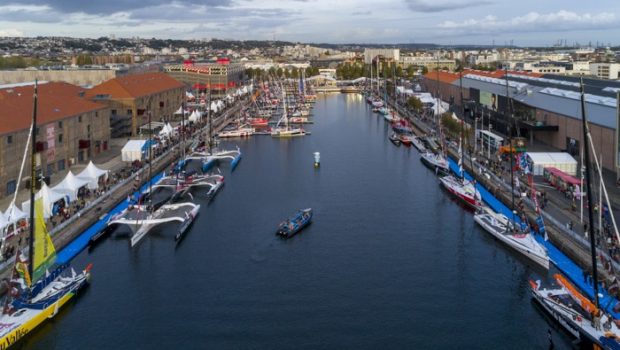

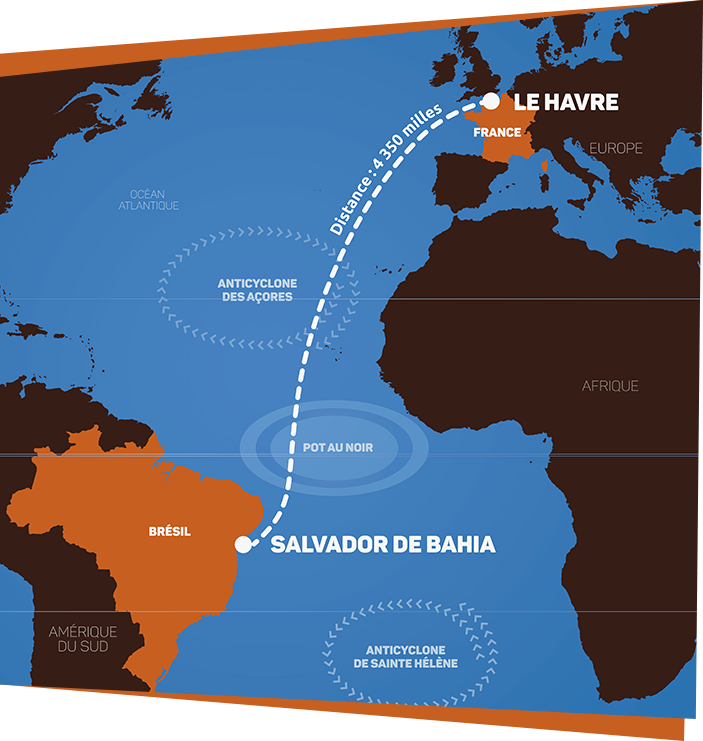

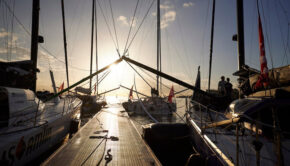
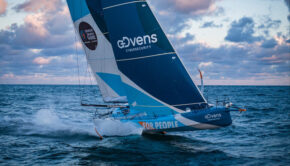
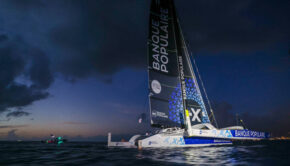
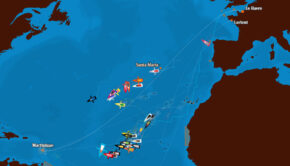
 We’ll keep your information safe.
We’ll keep your information safe.